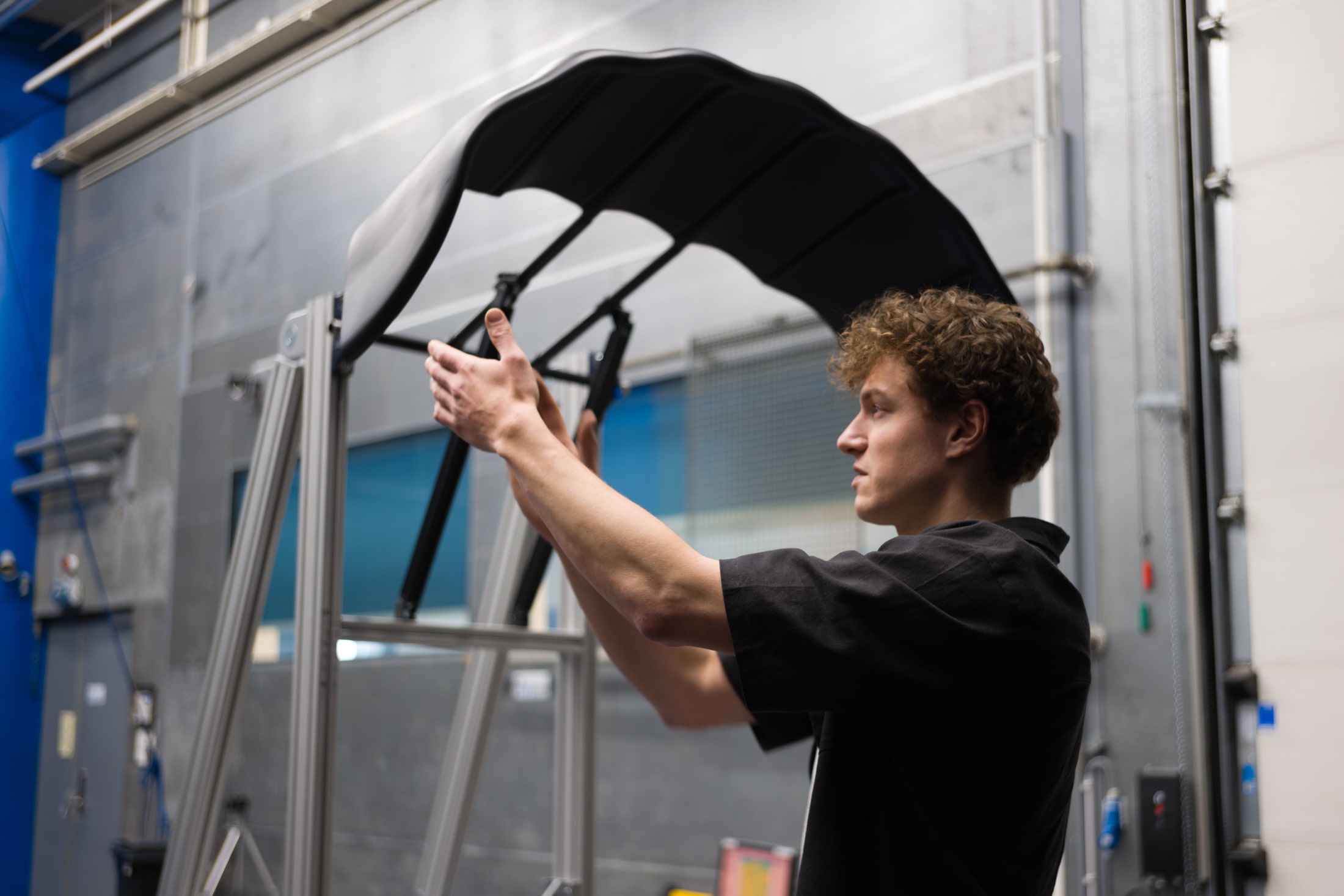TU Delft PhD Researcher Jelle Poland Advances Real-Time State Estimation for Kitepower
juli 21st, 2025
TU Delft PhD candidate Jelle Poland is pushing the boundaries of airborne wind energy research through his cutting-edge work in system state estimation, aero-structural modeling, and kite deformation analysis. His developments are a crucial step toward making kite-based renewable energy systems smarter, more reliable, and easier to scale.

Real-Time Deformation Modeling
A major focus of Poland’s research is how flexible membrane kites deform under aerodynamic loading and how this deformation impacts flight behavior and control. He has developed computationally efficient deformation models that predict how the kite’s surface responds in flight conditions. These models factor in structural tension, pressure distribution, and real-time flight dynamics.
His work will enable real-time integration of deformation data into flight control algorithms, improving the kite’s maneuverability, flight stability, and energy yield—especially in turbulent or rapidly changing wind environments. The deformation predictions are vital for ensuring the kite maintains optimal shape throughout its pumping cycles.
Wind Tunnel Validation at TU Delft
To validate these models, Poland conducted groundbreaking experiments at TU Delft’s Open Jet Facility, one of Europe’s leading low-speed wind tunnels. These tests included wind tunnel trials with inflatable, rigidized soft kites, replicating realistic in-flight pressure and tension conditions.
High-resolution Particle Image Velocimetry (PIV) and photogrammetry were used to measure both the airflow and the shape deformation of the kite in detail. The data gathered allowed Poland to calibrate his models, reducing the gap between simulation and reality. His validation results confirm that such simulation tools can be reliably used to predict and optimize kite flight performance.
Why It Matters for Kitepower
- Realistic control models: Incorporating deformation into simulations leads to more precise predictions of lift, drag, and control response.
- Flight optimization: Understanding how the kite deforms in real time allows control systems to optimize the power cycle, increasing energy output and durability.
- Hardware-light solutions: Combining accurate modeling with minimal sensors reduces system complexity—an essential advantage for mobile wind energy units.

In short, Jelle Poland’s research on real-time state estimation and aerodynamic deformation provides the technological backbone for autonomous, high-performance kite power systems. His work is not just theoretical—it’s physically tested and directly applicable to commercial energy systems being deployed by innovators like Kitepower.



